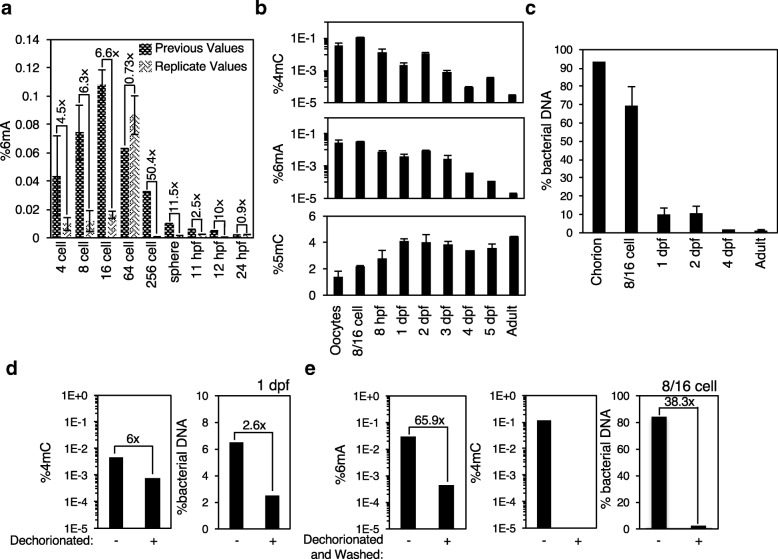Fig. 4.
Bacteria adhering to zebrafish chorion presents as a developmental change in 6mA and 4mC concentrations. a Replicate UHPLC-ms/ms quantification of zebrafish displays some change in 6mA quantification relative to previously reported [14] values but the developmental decrease was reproduced. Previous values are displayed in trellis bars and new values are displayed in weave bars. Each bar represents the mean +/− standard error of independent samples. b Initial UHPLC-ms/ms quantification of zebrafish displays a developmentally correlated increase in 5mC and decrease in 4mC and 6mA. hpf = hours post-fertilizatoin, dpf = days post-fertilization. Each bar represents the mean +/− standard error of the mean of 2–4 independent samples. c % bacterial DNA decreases across development as assessed by real-time RT PCR using prokaryote-specific 16S rRNA and zebrafish specific frrs1b primers. There is a significant decline in bacterial content with time as assessed by one-way ANOVA (p < 0.0001). d Dechorionation of 1 dpf zebrafish embryos causes a 6-fold decrease in 4mC (left panel) and 2.6-fold decrease in bacterial contamination (right panel) as assessed by UHPLC-ms/ms and real-time RT PCR respectively. e Dechorionation followed by 70% ethanol washing causes a 65.9-fold decrease in 6mA (left panel), elimination of detectable 4mC signal (middle panel), and a 38.3-fold decrease in bacterial contamination (right panel) as assessed by UHPLC-ms/ms and real-time RT PCR

